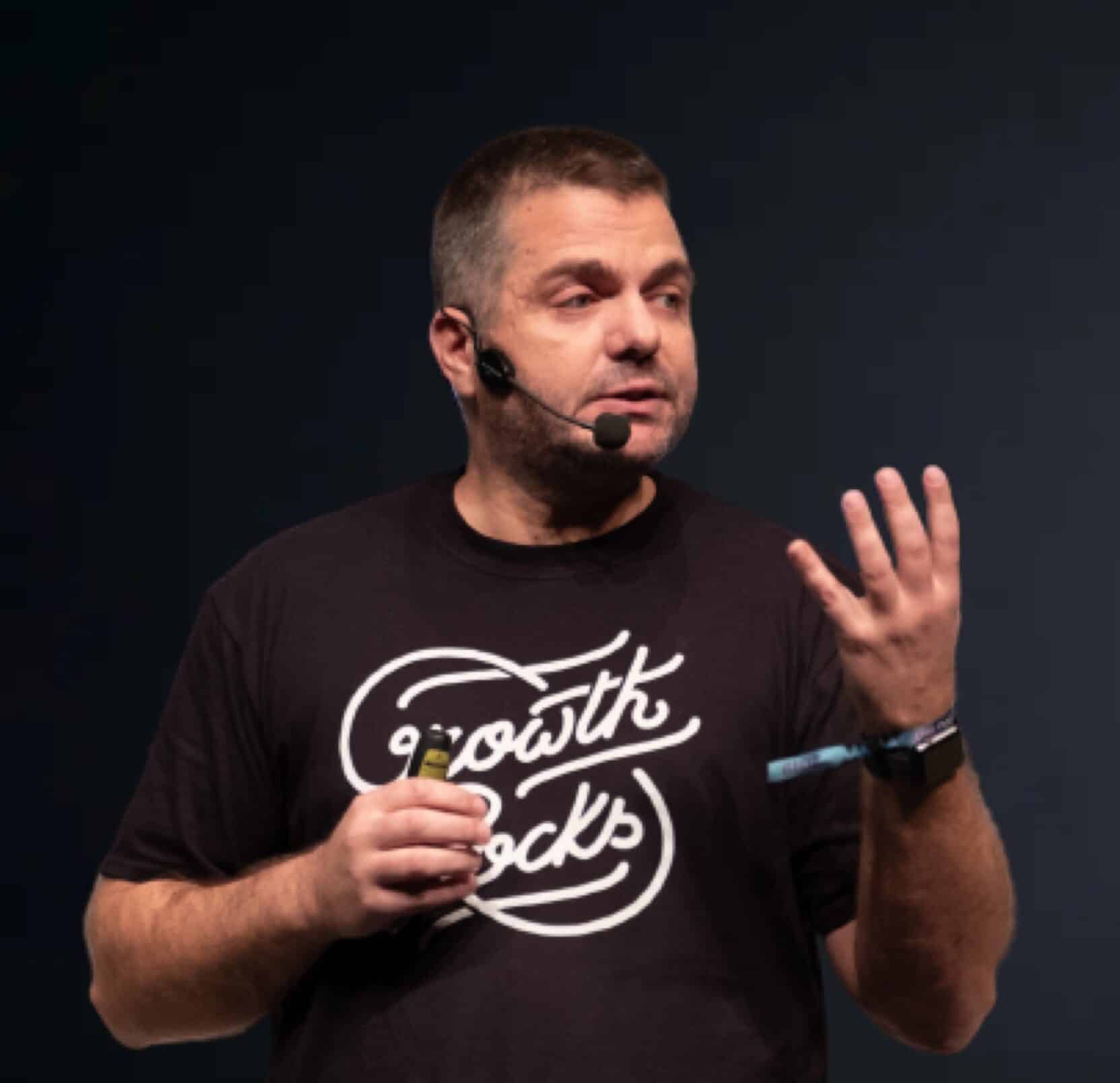E-Commerce wasn’t something that only nerds and freaks were interested in anymore. It had become a respectable venture. E-commerce was now in the mainstream. The marketplace had changed forever. Although the market had changed, the marketers around the world hadn’t adopted. Decades of traditional marketing knowledge, strategies, and tactics could not be applied in the new digital world.
Yet where some marketers were putting a lot of effort into coping with the new reality and failing, others seemed to thrive. But these were no traditional marketers. So what were they?
What is a Growth Hacker?
Definition
We can’t possible define the term growth hacker without quoting the man who coined this term, Sean Ellis. Sean Ellis is an entrepreneur, investor, and the first marketer for Dropbox. In 2010, he coined this term to describe what he and a few others were doing and how they were different from the rest digital marketers.
A growth hacker is a person whose true north is growth. Everything they do is scrutinized by its potential impact on scalable growth.
– Sean Ellis, GrowthHackers CEO
Since then, other professionals have tried to define the term. Two of them are the guys who wrote the book on growth hacking. Literally.
A growth hacker is a highly resourceful and creative marketer singularly focused on high leverage growth.
– Chad Riddersen & Raymond Fong, authors of Growth Hacking
A new breed of marketer
A growth hacker is likened to a product given from the chemical reaction of two elements; Marketing and Engineering. He is like a super-mutant of the Internet era. Instead of traditional marketing, which typically breaks the continuity of your day, a growth hacker understands user behavior to persuade, through the value it immediately provides. A growth hacker will leverage across several disciplines; from analyzing insights derived from how people flow online and by applying typical gamification methods (e.g., point scoring, competition with others, rules of play), with the view to encourage engagement with a product or service.
A growth hacker can be found in key positions in companies, like Head of Growth. And one can most certainly find them working for a growth hacking agency.
Growth hacking is based on marketing but driven by an obsessive focus on the product. The growth hacker finds a strategy within the parameters of a scalable and repeatable method for growth, that relies on this obsession. He is more like a golden section between marketing, product, and data. Danielle Morrill, co-founder & CEO of Mattermark, said that “the best growth hackers are questioning marketing as we know it today because the online tactics that were once the territory of a select few are now table stakes.”
The Growth Hacker Mindset
It’s a fact that a growth hacker is a mostly right-brained individual with lusty glances at the left side. The right cerebral hemisphere of the human brain is responsible for creativity, intuition, and the will to take risks. On the other hand, the left controls logic, reason, and analytical thinking. As a growth hacker, being creative is an essential feature, since it might be your best, but not your only, weapon in the business war. But remember; A growth hacker is also an analytics addict. The best formula is to channel your creativity into data and proof to make decisions.
The Growth Hacker Brain Map
Left-side
- Data-oriented: It’s all about Data! All risks and decisions, in general, are taken due to data collected from research and analytics.
- Analytical thinking: By the abstract separation of a whole into its constituent parts, a Growth Hacker studies the parts and their relations seeking viral loops to plant Growth into the product.
- Logical: All the Processes, a Growth Hacker follows are based on earlier or otherwise known statements, events, or conditions.
Right-side
- Creative: Finds innovative ways to do things.
- Opportunistic: Has the foresight to find openings, to achieve goals.
- Risk taker: Taking risks sometimes, can put a growth hacker out of a tough situation. After all, failing is considered an honest mistake.
The Growth Hacking Skillset
Consider a growth hacker as a marketing Warlord. In battle, except for weapons probably an essential element is, the ability to use them and the required physical training. As a warrior needs speed, good reflexes, strength, and dexterity to get through the battles in one piece, a Growth Hacker must master his abilities in:
- Data Analysis: Statistics, Spreadsheets, R, Pandas
- Coding: HTML, CSS, JQuery, JavaScript, Python, APIs
- Marketing: Analytics, A/B Testing, Conversion Optimization, Email Marketing
Pick up your weapons and fight
Your “war chest” as a Growth Hacker contains different types of equipment. “Armor” type tools to defend against your competitors and “ranged/melee” weapons to unleash your marketing attacks. Typically, a Growth Hacker’s tools are considered to be everything that comes in use, depending on the occasion, but here is a sample of the best choices out there.
This is the growth hacking toolkit:
- Analytics Platforms (Google Analytics, KISSMetrics, Mixpanel, Trak.io)
- HTML editors or IDEs (Sublime Text, WebStorm)
- Product & Project Management (Trello, Asana, Jira)
- A/B Testing Platforms (Google Experiments, Optimizely, Visual Website Optimizer, Taplytics)
- Landing Page Platforms (Unbounce, LeadPages, Instapage)
- Email Marketing (MailChimp, Mandrill, Intercom)
- Social Media (Buffer, Static, Social Sprout, SumAll)
The Growth Hacker’s war plan
A real Growth Hacker always has a plan, and he always sticks to it. And behind, his every plan lies a specific approach to achieve his ultimate goal: Growth! This Growth(!) consists of 5 steps:
- Measure: Measure everything. Even if you’re not ready yet to understand or analyze the data you gather, it doesn’t matter. It’s really important to have them there when you need them.
- Analyze: Analyze what matters and see what works and what’s not. Throw away any vanity metrics and keep only the actionable ones. Focus on one metric at a time (maximum two).
- Test: Based on your data analysis, change your product, website, landing page, email campaign, etc. and see what happens. Keep in mind that more significant changes cause a bigger impact. Don’t be too risky but be innovative. In a later post, I will show you how you can mitigate this risk. Try to keep the testing period 1-2 weeks time.
- Compare: Compare your new data with previous measurements. This is the only way to find out the impact of your change.
- Refine: Based on the result, tweak your change.
- Repeat: Repeat the same process until you reach your goal.
For more growth hacking, however, I’d suggest reading The Introduction To Growth Hacking.
How to become a Growth Hacker
So how does one become a growth hacker? Well, the same, you become everything: Study, study, and then study some more.
If you like The best Growth Hacking Courses in 2019.

Theodore has 20 years of experience running successful and profitable software products. In his free time, he coaches and consults startups. His career includes managerial posts for companies in the UK and abroad, and he has significant skills in intrapreneurship and entrepreneurship.




![Community Marketing: 6 Steps to Building a Brand Community [+5 Examples]](https://growthrocks.com/wp-content/uploads/2023/07/community-marketing_GrowthRocksTN.jpg)

3 Responses
A very informative post!
The battle of “data-taming” has already started.
Choose your weapons and fight! 🙂
Thank you for your kind words, mate. A lot of great stuff is about to come up in this blog. Stay tuned!!!
P.S. I like your warrior-style 😉
Hello there I am so delighted I found your site, I really found you by
error, while I was researching on Digg for something else, Anyways I am here now
and would just like to say thanks for a remarkable post and a all
round enjoyable blog (I also love the theme/design), I don’t have time to browse it all at the moment but I have bookmarked it and
also included your RSS feeds, so when I have time I will be back to read a lot more, Please do keep up the superb work.
My web site David Caruso